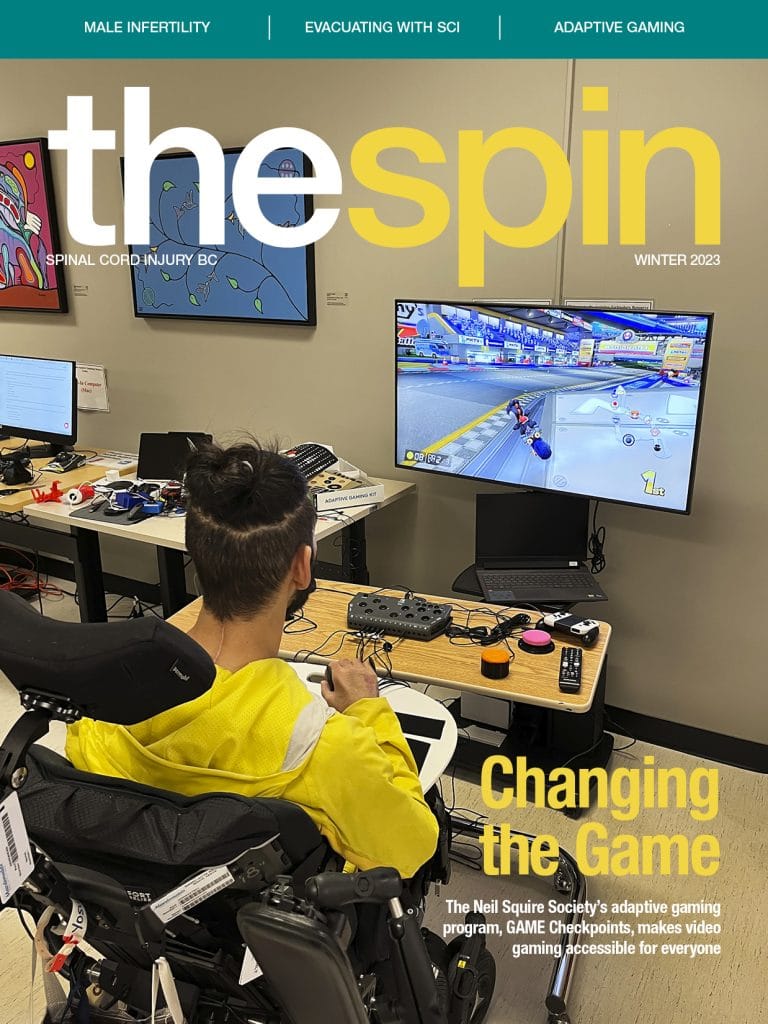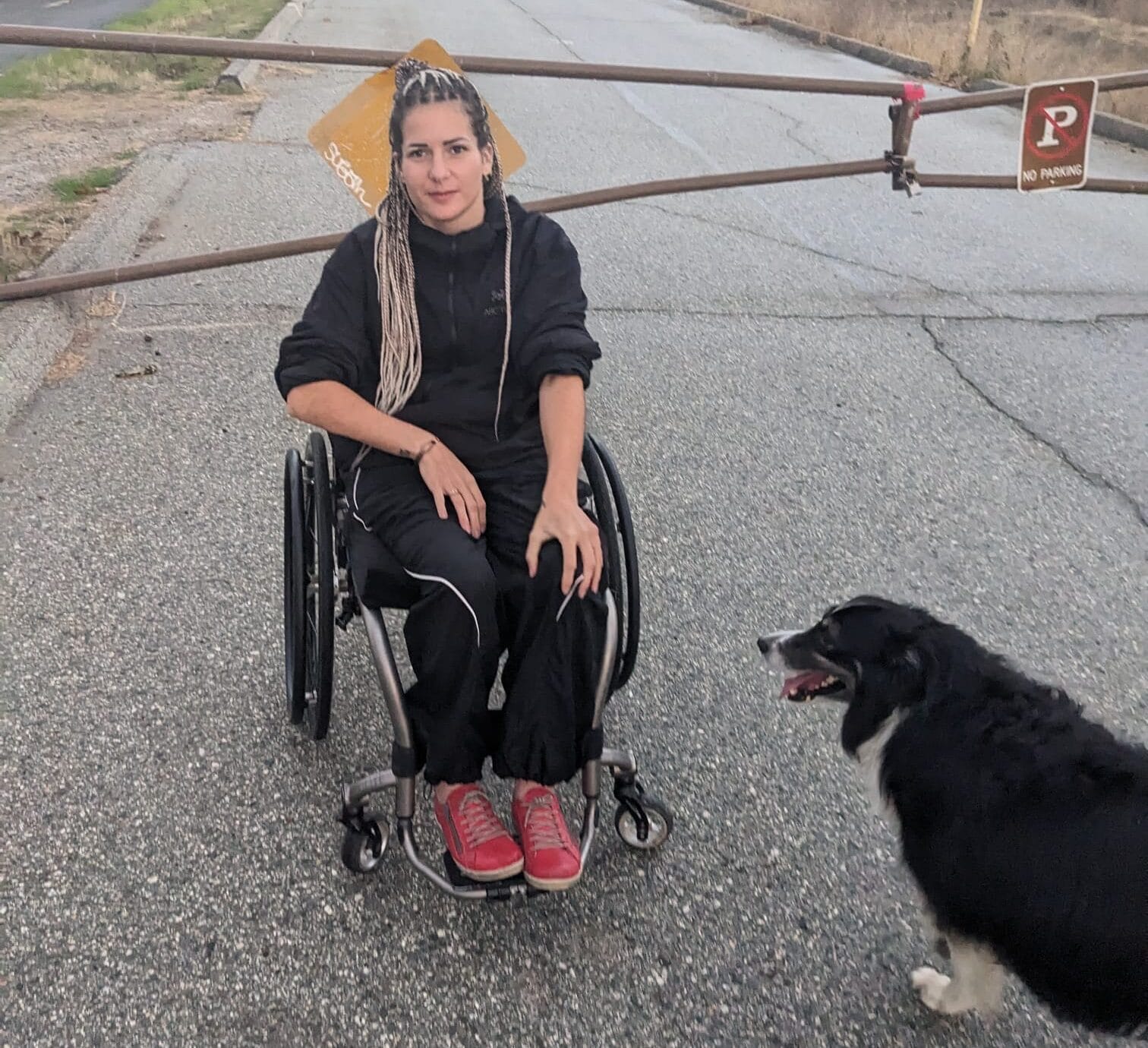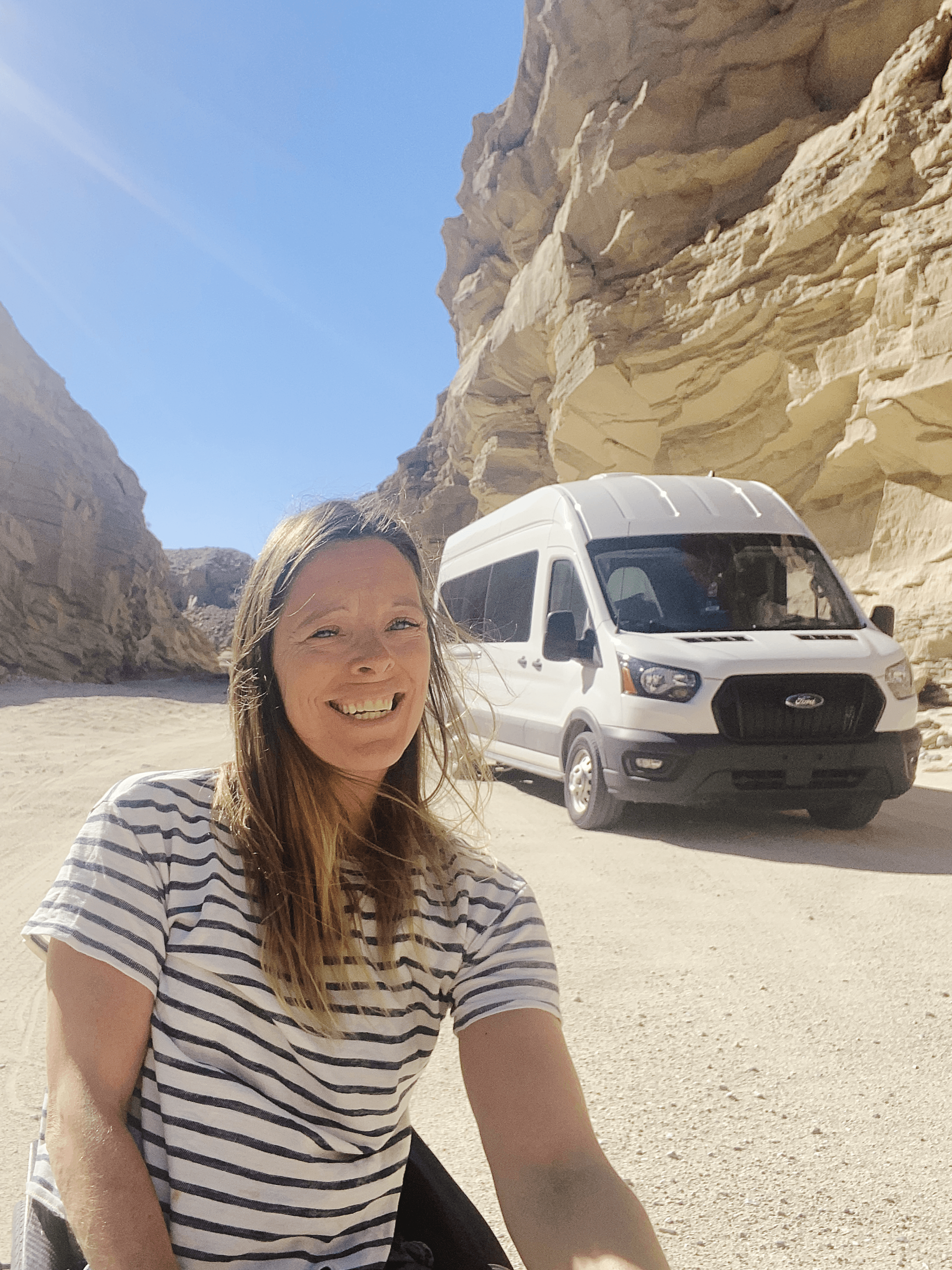
Have you thought about purchasing an electric vehicle (EV)? As of September 2023, there are more than 120,000 EVs and 153 public EV charging units at 84 sites in BC, according to BC Hydro. Over the next 10 years, the number of EVs in BC is expected to increase by up to eight times, with the installation of 3,000 additional units planned. In the last issue of The Spin, we shared tips from SCI peers on self-serve gas stations (PeerSAY: Self-Serve Gas Stations, Fall 2023). With the advent of EVs, we can’t help but wonder about the accessibility of EVs and their corresponding charging stations.
SCI peer Jacques Courteau was one of the first advocates to raise concerns. “BC Hydro was making a presentation to [the Vancouver Electric Vehicle Association] on new charging stations that they had planned. On all of the slides that they showed, I would not have been able to charge at any of those chargers,” Courteau told Electric Autonomy Canada.
When it comes to charging stations, there’s two main things the user must be able to do: get to the station itself and plug in the charger. What Courteau and other EV users with disabilities have found is that charging stations are built on curbs and with limited width to turn around in a wheelchair. Protective posts in front and elevated equipment and controls make it difficult or impossible to operate the charging station. And, people with (and without) disabilities who manage to get to the stations report that the charging cables are too heavy.

Unlike gas stations, there are no attendants at charging stations to offer assistance. Likewise, most charging stations are not covered, which for people with disabilities who may take more time to get to and operate the charger, means more time exposed to Canada’s often unfriendly weather—no one wants to get drenched by rain or snow while they pump gas or charge their EV!

So, what happened with Jacques Courteau and BC Hydro? BC Hydro invited him to travel with their team to several charging stations. “Their reaction was amazing. They were so eager to do something about it,” Courteau told BC Hydro. He worked with BC Hydro to revise their standards for new stations, including wider parking spaces, paved ground, posts that don’t interfere with wheelchair access, lighter weight charging cables, and operating controls at a lower, more accessible height.
When the voices of people with disabilities are valued, listened to, and implemented, amazing things happen. Car manufacturers are working on innovations such as robots for hands-free charging and wireless charging pads for vehicles. There’s even a new road being tested in Detroit that charges vehicles as they drive on it. SCI peers have floated the idea of EV charging stations being able to charge mobility devices, too. Imagine being able to charge your wheelchair battery while waiting for your electric vehicle to charge or while on a road trip. How great would that be?
To achieve Canada’s goal of net-zero emissions by 2050, federal regulations require that at least 60 percent of new vehicles sold in Canada will be zero emission by 2030. Governments and manufacturers need to build trust and invest in accessibility now if they want buy in from the disability community, so we can all be included in the transition to EVs.
This article originally appeared in the Winter 2023 issue of The Spin. Read more stories from this issue, including:
- Adaptive gaming
- A new treatment for male infertility
- Peers’ evacuation experiences
And more!




